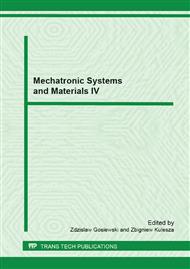p.171
p.176
p.182
p.188
p.194
p.200
p.206
p.220
p.226
Flight Loads of Mini UAV
Abstract:
Designing and building of the unmanned aircraft, especially light and ultra light vehicles, is mainly performed using the experience gained when constructing the flying models. There have not been uniform principles of building and exploiting of the mini and micro UAV (Unmanned Aerial Vehicle) in the form of regulations similar to those for manned airplanes. The unmanned vehicles of these classes in terms of their abilities and attractive price are more frequently exploited using the same air area as manned airplanes performing missions over the inhabited areas. An urgent necessity arises to work out the norms of flight suitability of the mini and micro unmanned aerial vehicles. The work contains the analysis of suitability of the current aviation regulations to determine the requirements for the mini unmanned vehicles. The work concentrates on the phenomenon of determining the symmetrical loads from the maneuvers and the turbulence atmosphere. The result of this analysis is the Limit Maneuver Envelope, Limit Gust Envelope and Limit Combined Envelope for mini UAV. The analyzed flight states allowed selecting the so called design cases which can become a basis for determining the norms of loading of mini unmanned aerial vehicles which can constitute the beginning of the regulations for building of the unmanned aerial vehicles of this class.
Info:
Periodical:
Pages:
194-199
Citation:
Online since:
March 2013
Authors:
Keywords:
Price:
Сopyright:
© 2013 Trans Tech Publications Ltd. All Rights Reserved
Share:
Citation:


